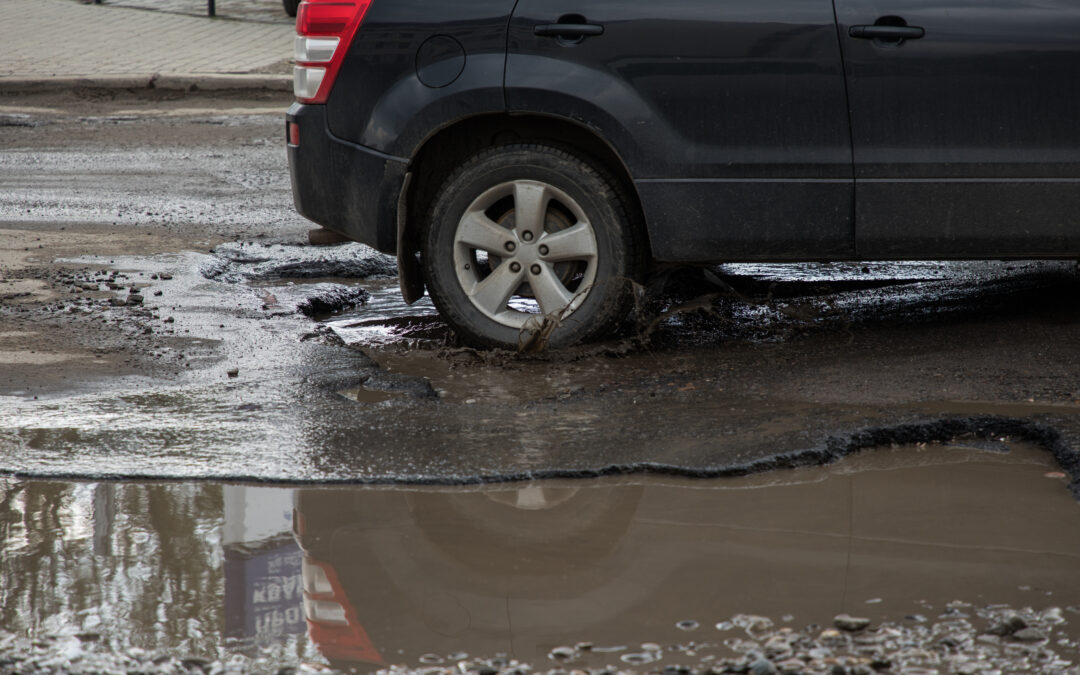When it comes to roads, drinking water, energy and other infrastructure components, Michigan’s 2023 report card was mediocre at best.
The state received nine “C’s” and five “D’s,” for an overall grade of “C-” on this year’s assessment from the Michigan Section of the American Society of Civil Engineers (ASCE). It was a slight improvement from the “D+” Michigan was given in 2018, and matched the national grade assessed in 2021.
None of the 14 areas of focus received a score of exceptional (A) or good (B) this time around. There were also no failing (F) grades.
“People in Michigan know all too well the importance of reliable infrastructure,” said Andrew Rossell, founder of AR Engineering and a member of the Michigan Report Card Committee, during a presentation of the 133-page report Monday, May 8, in downtown Lansing.
“This report is a snapshot tool for residents, municipalities, businesses and policymakers to reference as they engage in conversations about where we are and where we want to be.”
Possible grades ranged from “A” for exceptional and fit for the future, to “F” for failing/critical and unfit for its purpose. Grading criteria for each area looks at capacity, condition, funding, future need, operation and maintenance, public safety, resilience and innovation.
Factors impacting Michigan’s low grades in 2023 included millions in annual funding deficits for roads and drinking water infrastructure, above-average restoration times for power outages, deferred maintenance, and both private and public storm sewer systems not having the capacity to safely convey water during extreme water events.
The group gave out “C” letter grades for infrastructure that was mediocre and in need of attention. To get this grade, a system is in fair or good condition and shows general signs of deterioration with some elements showing significant deficiencies in condition and functionality.
These areas include:
- Aviation (C)
- Rail (C)
- Dams (C-)
- Schools (C-)
- Solid waste (C+)
- Inland waterways (C)
- Transit (C-)
- Public parks (C)
- Wastewater (C)
A “D” grade indicates poor or at-risk infrastructure. Its condition is poor to fair and mostly below standard, with many elements approaching the end of their service life.
These areas include:
- Bridges (D+)
- Roads (D)
- Drinking water (D+)
- Energy (D)
- Stormwater (D)
Lance Binoniemi, vice president of government affairs for the Michigan Infrastructure and Transportation Association (MITA), said he wasn’t surprised by the state’s poor infrastructure grades, adding that Michigan continues to have a “significant underinvestment problem.”
“These grades should be unacceptable to every Michigan citizen,” Binoniemi said. “Nothing is going to change in Lansing or on investing in our infrastructure properly until the public demands better roads, passable bridges and safer drinking water. It’s time Michigan leaders make a long-term, equitable, sustainable infrastructure investment plan for our state.”
Broadband was another infrastructure element in the report, but it wasn’t given a letter grade. The group said there was insufficient information to justify a grade.
Five areas — drinking water, roads, rails, schools and stormwater systems — each saw a boost from their grade in 2018. Energy and bridge grades went down over the last 5 years, while the remaining areas were unchanged.
ASCE noted that Michigan has long suffered the impacts of chronic underinvestment. However, it said there’s been progress over the last five years with the help of state and federal investment, including $3.5 billion in bond funding from the Rebuilding Michigan Program and $4.7 billion from the Building Michigan Together plan. The state will also receive $11 billion over the next five years from the 2021 Bipartisan Infrastructure Law.
“These grades show that Michigan legislators and agencies are continuing to work hard and improving our built environment,” said Brad Ewart, president of the American Society of Civil Engineers Michigan Section. “But there’s plenty of work left to be done.”
To boost the state’s grades, the group recommends enhancing and expanding dedicated funding for infrastructure at the state and local levels. Progress made in road condition, airport capacity, school facilities, and water system projects can’t be sustained without greater predictable funding, the report said.
They also recommend coordination between government leaders, the private sector, and schools to maximize the benefits of state and federal investment as it pertains to hiring and retaining staff, as well as advancing upgrades to infrastructure systems to help them stay operational during unpredictable storms and other high-magnitude threats.
In 2018, Michigan got an overall grade of “D+,” with nine areas receiving a “C” and four getting a “D.”
This article originally appeared in MLive. For more, click here.

